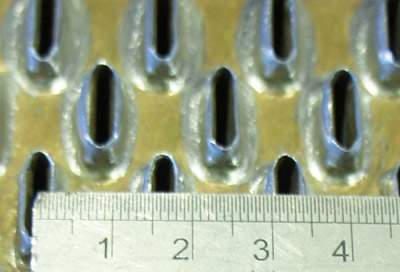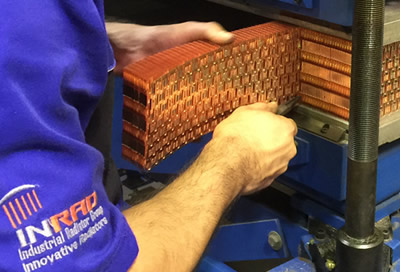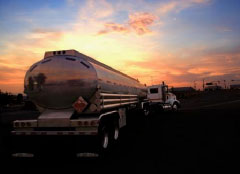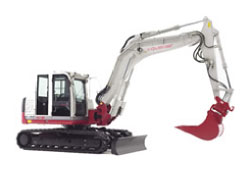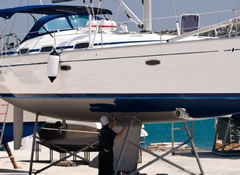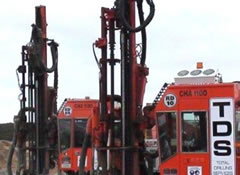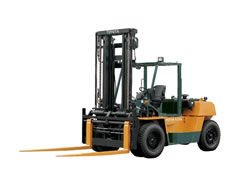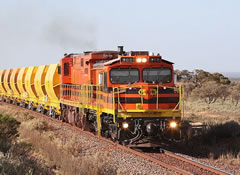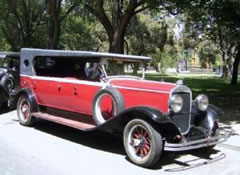Radiators allow engine efficiency by maintaining safe temperatures
A radiator designed to transfer heat from the hot coolant that flows through it to the air blown through it by the fan. Traditionally brass and copper have been used in radiator construction. These materials are often still preferred for long term robustness, longevity and reliability especially for mining, heavy industry and transport.
Most modern cars in contrast use aluminium radiators with plastic tanks. These radiator cores are made by brazing thin aluminium fins to flattened aluminium tubes.
Radiators circulate a cooling medium such as water, oil or air. Regardless of the materials used, and the coolant type, the coolant flows from the inlet to the outlet through many tubes mounted in a parallel arrangement. The fins conduct the heat from the tubes and transfer it to the air flowing through the radiator.
When hot coolant is pumped into the radiator, it is brought in contact with a large volume of air, causing a transfer of heat from the coolant to the air. Forced into the radiator’s inlet tank, it filters through tiny heat conductive tubes in the core on its way to the outlet tank for return to the engine block.
More Tubes means More Cooling, and Better Fuel Economy
Generally, the more rows of the tubes, the heavier duty the radiator is. If you are pulling or hauling loads close to the capacity of the vehicle, it would be prudent to install a heavier duty radiator. A common occurrence in Australia’s harsh climatic conditions is seeing a truck on the side of the road with overheated engine due to an inefficient or defective radiator. Overheating will often damage an engine, reduce its life and this sort of thing is so preventable through regular radiator maintenance and testing.
Tube spacing
Tubes are typically 12mm spacing or 16mm spacing. Tubes shown above are staggered, but may also be in line (with each other), or cantered (angled) to create air flow turbulence.
Two types of radiator designs are used—down flow and cross flow. Sensible radiator design dictates that the widest dimension (height or width) should be the direction of the tubes to maximise the cooling capacity. In retro fitting or radiator replacements, you may have a choice of reconfiguring the radiator for better cooling performance. Some industries up-spec the thickness of replacement cores, or boost the number of tubes to improve engine performance at lower temperatures.
Down Flow Radiator
A design that is losing ground in modern vehicles. Its high profile limits its use in low profile vehicles. It is still popular with heavy equipment manufactures. In a conventional vertical-flow design, the expansion (inlet) tank is located at the top of the core and connected by a flexible hose to the coolant outlet housing on the engine. Coolant passes from the inlet tank and down through the core to the bottom (outlet) tank, also connected by a flexible hose to the water pump inlet. This permits coolant circulation through the radiator when the thermostat allows it. The outlet tank on automatic-transmission-equipped cars can often contain a heat exchanger or transmission oil cooler unit through which automatic transmission fluid is circulated for cooling.

down flow radiator
Cross Flow Radiator
The most common among modern cars. Turn the conventional down flow radiator on its side and you have the cross flow design. With the header tanks on each side (instead of top and bottom), the coolant travels horizontally instead of vertically. The header tank fitted with the radiator cap is the outlet tank, equivalent to the lower tank of the down flow design, and may contain a transmission fluid oil cooler on automatic-transmission-equipped models. The cross- flow design has two distinct advantages: it permits the use of a lower styling profile; and reduces pressure on the radiator cap, which prevents the cap from failure if a blockage occurs and the radiator overheats.
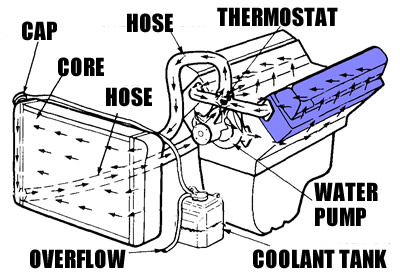
cross flow radiator
Tube Design
The tubes sometimes have dimpled walls (slight deformation), which increases the turbulence of the fluid flowing through the tubes. If the fluid flowed very smoothly through the tubes, only the fluid actually touching the tube walls would be cooled directly.
The amount of heat transferred to the tubes from the fluid running through them depends on the difference in temperature between the tube and the fluid touching it. So if the fluid that is in contact with the tube cools down quickly, less heat will be transferred. By creating turbulence inside the tube, all of the fluid mixes together, keeping the temperature of the fluid touching the tubes up so that more heat can be extracted, and all of the fluid inside the tube is used effectively.
Fin Design
Fin spacings also impact radiator efficiencies. Fins may be spaced close together at say 13 fins per inch, or wider apart at say 4.5 fins per inch. Fins are light weight metal typically copper, brass or steel.
Recommended Radiator Maintenance
The tubes in radiators are so small that it is vitally important to keep them clean from internal pollutants. The coolants pick up a lot of rust and minerals from the engine block and over time this can create blockages in the radiator tubes. Always use clean filtered distilled water or specialty coolant in your cooling system. Regular core flushing and pressure testing is an essential maintenance procedure to ensure a long life for your radiator.
The external surfaces should be clean of any oil, bugs and leaves. Any blockages of the tubes or fins can take away their cooling abilities.

This radiator has damaged cooling tubes, the only repair is to re core or replace the radiator. If it is not leaking now, it soon will be. The tube walls are thinned out so much by the damage and higher pressures can fracture or spilt them. Something you don’t want occurring when you’re miles from anywhere.
Aluminium/Alloy cores are more susceptible to stray current.
Stray current is basically a ‘short’ or electrical fault in the vehicle’s electric circuits causing voltage to be present in the radiator coolant. The engine is trying to ‘earth’ though the coolant as this is more conductive than other earths on the vehicle.
Any stray current will erode the cooling system including cylinder head(s), water pump, thermostat housing and of course the radiator. Often the radiator will show the first signs of this erosion as tube and plate of aluminium radiators are the thinnest parts of the cooling system.







